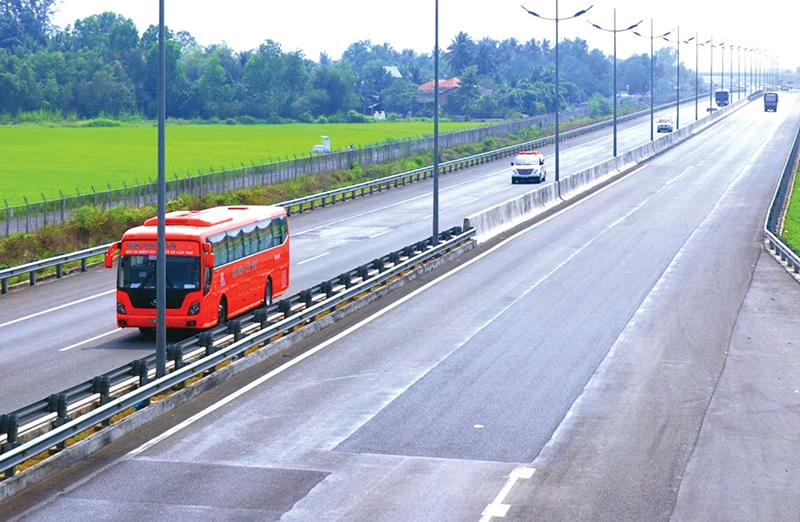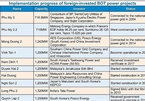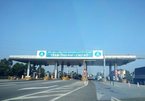 |
| Foreign investors constantly view potential moves in Vietnamese infrastructure schemes, Photo: Le Toan |
The National Assembly (NA) last week adopted the Law on Public-Private Partnership Investment, drafted by the Ministry of Planning and Investment, with 92.75 per cent vote in favour. Under the law, the revenue risk allocation between the investor and the state gets high support aiming to leverage private investment in the future.
Under the law, not all public-private partnership (PPP) projects can enjoy the revenue risk sharing mechanism. Only PPP initiatives facing a drop in revenue can get revenue risk allocation, while not applying for loss-making PPP ventures, or those losing capital.
Specifically, when the actual revenue reaches less than 75 per cent of the revenue in the financial plan under the PPP contract, the state shall share with the investor and the PPP project enterprise 50 per cent of the difference between 75 per cent of the revenue in the financial plan and the actual revenue.
The revenue share reduction is applied when the following strict conditions are satisfied: Projects applying build-operate-transfer (BOT), build-transfer-operate, and build-own-operate contracts; change in plans, policies, and relevant laws resulting in revenue reduction; implementation of all measures to adjust the fee of products and public services, adjusting the term of PPP project contract but not guaranteeing that minimum turnover is 75 per cent; and having been audited by the State Audit Office of the revenue reduction part.
When actual revenue reaches more than 125 per cent of the revenue in the financial plan under the PPP contract, the investors and PPP project enterprises shall share with the state 50 per cent of the difference between the actual revenue and 125 per cent of the revenue in the financial plan. Sharing increased revenue shall be applied after adjusting the price, fee of products, public services, adjusting the term of PPP project contract and to be audited by the State Audit Office.
Le Net, lawyer at LNT & Partners told VIR, “The introduction of the profit/loss sharing mechanism to the market will be a good signal for investors, thus encouraging international financiers to join PPP infrastructure development in the following years.”
Some economists are concerned it is still unclear if this mechanism is automatic or optional, or conditional to successful negotiations. “If it is automatic, the principle applied to determine the extension should be clarified in the guiding regulations. If it is conditional, it is unlikely that the investor will willingly concede a reduction of the concession, despite higher revenues,” noted Vaibhav Saxena, lawyer at Vietnam International Law Firm.
Similarly, senior economic expert Nguyen Tri Hieu said that banks still hesitate to lend BOT initiatives for fear of capital increase and long period of investment and high risks. BOT - a type of PPP model - is the most popular model in Vietnam.
“To attract private investors in BOT transport projects, the government should make plans, and investors have opportunities to gain reasonable profit. Funding for PPP projects can be done via issuance of government bonds.”
Earlier, international development partners like the World Bank and the Asian Development Bank, as well as international ventures like Lotte E&C, Taisei, and others have raised their concerns over the issue, hoping that the newly-approved law on PPP investment will ease all when it comes into effect from January 2021, clearing the way for domestic and international private financiers to join future projects.
For years, revenue-risk allocation in PPP initiatives has been a controversial topic because of their high risk of losses and lack of a completed legal framework and risk-sharing mechanism. Thus far, the power sector has been the most successful sector at attracting foreign investment in BOT projects, while other sectors, especially transport, have seen failures.
Previously a number of BOT initiatives have hit the rocks, including Dau Giay-Phan Thiet Expressway – the first pilot transport project in the PPP format despite strong interest among powerful international investors. Meanwhile, other BOT initiatives are credit stuck, such as at Huu Nghi-Chi Lang, Van Don-Mong Cai, and Trung Luong-My Thuan. Many of them have halted construction for a number of years due to loan access problems.
Also last week, the NA adopted the amendments to the Law on Investment and the amendments to the Law on Enterprises.
Expected to take effect from early 2021, the two amendments will consist of a number of improvements in market access, investment incentives, and more besides, thus creating more favourable conditions for business and investment activities in the future. VIR
Bich Thuy

Delayed BOT projects threaten to disrupt future power supply
A series of build-operate-transfer power projects are lagging behind set schedules by as much as a year due to the global pandemic, threading concern into the power supply issue in the coming time.

Nearly US$3 billion worth of loans to BOT projects likely to become bad debt
Forty-nine BOT (build-operate-transfer) transport projects have been reported as having revenue below expectations.